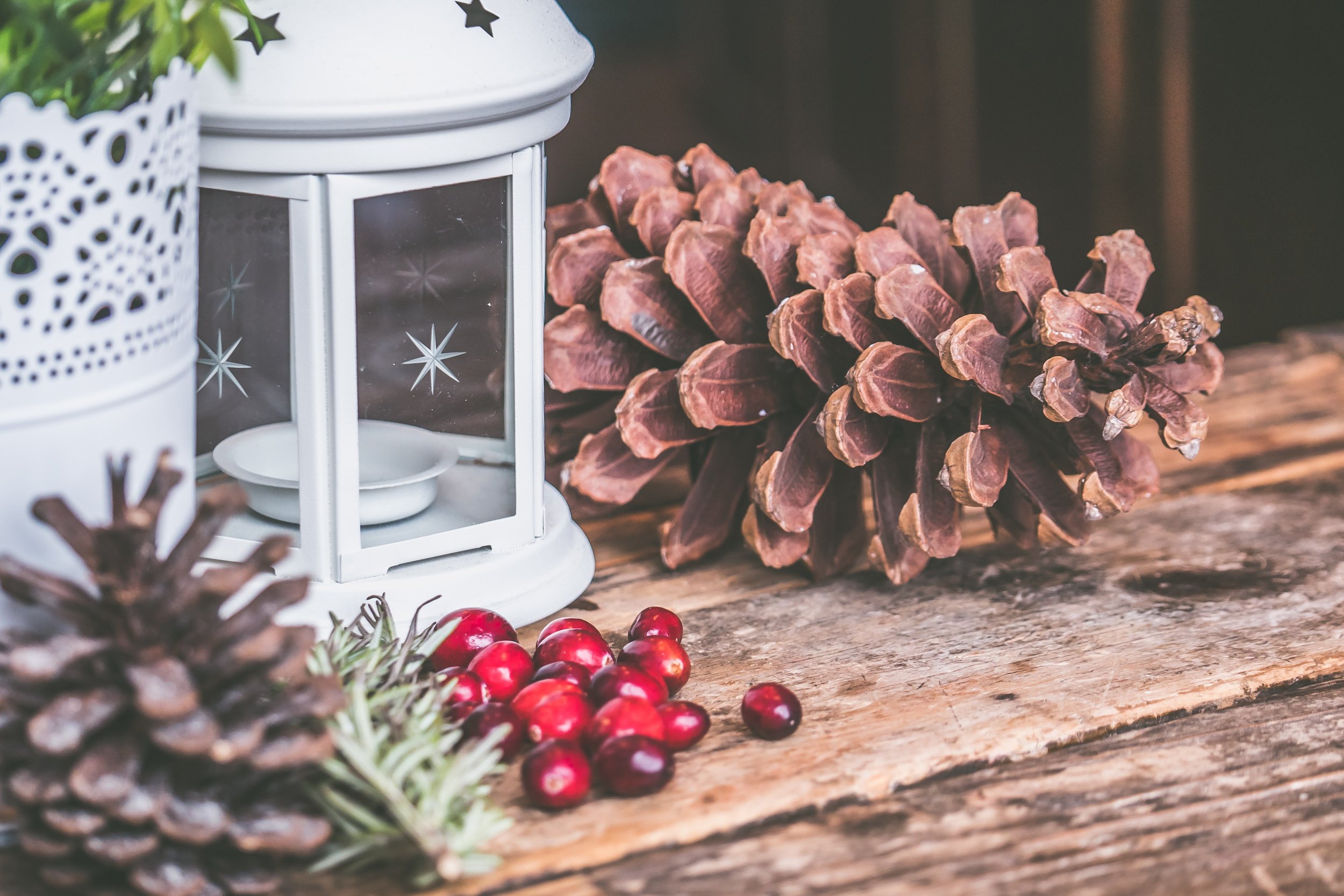How to Celebrate the Winter Solstice in Your Homeschool
Celebrate the shortest day of the year by exploring the science of the seasons.

As part of a nature loving family, and with a child who loves science, I find the idea of celebrating the winter solstice appeals to me. What better way to honor the mystery and beauty of this earth than mark the changing of the seasons? The winter solstice marks the official beginning of winter. It is the day that the northern hemisphere has the shortest daylight hours, so the days following it get a little longer. Because of that, we can celebrate “the return of light.” I love that.
Last year I decided to try to institute what I hope will become a tradition in our house — celebrating the winter solstice. We also celebrate Christmas, so I didn’t want to make our solstice celebration something that would end up being a lot of extra work for me, and since at that time my boys didn't even know what the solstice was, I decided to use the occasion to teach them about it.
I discovered that there aren’t many books about the winter solstice that would appeal to my kids, but the one I did find was just right. I read The Shortest Day: Celebrating the Winter Solstice by Wendy Pfeffer to my seven-year-old. My younger son, who was four, lost interest in the book, but that was okay. We have many solstices ahead of us! (And I’ve already found a few new books to add to our list: The Return of the Light: Twelve Tales from Around the World for the Winter Solstice and The Shortest Day — Carson Ellis’s gorgeously illustrated version of Susan Cooper’s poem — are at the top of our list!)
The book did a good job of explaining how for thousands of years people all around the world have wondered about and celebrated the solstice. While the book does not get bogged down in details that young children might not care about, I wished there had been a few more details for my sake, but nevertheless, it was just fine for my seven-year-old.
For example, it tells about how ancient people became scared when the sun began to disappear and how they would hold long ceremonies to try to get their gods to bring the sun back, but it doesn't explain where or exactly when or where these people lived. It also tells of how some of the earliest astronomers measured the days and figured out which days would be the shortest and the longest, and it explains that many of our current customs stem from some of these old rituals held around the winter solstice. Illustrations help explain the story a little more.
The book has a good graphic showing the position of the earth at each solstice and equinox, and it has several suggestions for activities that you can do with your kids. I picked one where you use an orange and a lamp to demonstrate how the tilt of the earth stays the same as it travels around the sun. Only I used our globe and a lamp. This visual even helped me understand that as the North Pole tilts away from the sun, we have our winter and the Southern Hemisphere has its summer.
This coming winter solstice, I am hoping to add some more fun things to the day. Perhaps we will make peanut butter bagels dipped in birdseed and hang them in our trees to feed the birds. Maybe we’ll bake something special for us to eat as well. Maybe we’ll light some candles for a while. Or maybe we’ll go on another family hike that day.
I have also considered marking the summer solstice and the spring and fall equinox. But getting myself to remember to do one more thing when our calendar is already so busy is hard. This summer all I managed to do was to tell my boys that it was the summer solstice. When I told my four-year-old that it was the shortest night, he got excited. He thought that meant that he wouldn't have to sleep very long!
Creating new family traditions can be tricky sometimes, but I’m determined to at least celebrate the winter solstice, even if it ends up being something we do in a low-key, last-minute kind of way. Whatever ends up being our yearly solstice tradition, I hope it can be another way to inspire awe in my children for this earth, the universe and our abundant lives.
This column was originally published in the winter 2014 issue of HSL. (We’re Amazon affiliates, so if you purchase something through an Amazon link, we may receive a small percentage of the sale. Obviously this doesn’t influence what we recommend, and we link to places other than Amazon.)
If you’re planning to return to work when your homeschooling days are done, now — right now — is the time to start getting ready for career reentry.
You can't do everything, be everything, buy everything — nobody can. So why do homeschool moms feel so guilty about it?
If you want your students to care about writing, give them writing projects that actually matter.
It’s okay to scale way back if Pinterest-perfect holidays are making you stress more than you celebrate.
Homeschooling isn’t a competition — so why do we feel so compelled to compare our kids to other homeschoolers and traditionally schooled kids? (Hint: It’s probably more about us than about them.)
Jenn’s been struggling to find a balance between the structure and academics she needs and the fun, laidback vibe she wants her homeschool to have.
When the going gets tough, how do you juggle life and homeschooling?
Testing isn't the most important thing — but when testing creates a lot of stress for your student, a few practical strategies might help him get more comfortable with the process.
We recently found a homeschool group that my kids love. The problem: The moms are super clique-y and not very nice. Is it worth continuing in a group where I’m miserable, even if my kids are happy with it?
If your homeschool schedule isn’t making your life happier, easier, and more productive, isn’t it time to change things so that it is? Beverly has some great tips for creating a homeschool schedule that works for you.
Lauren’s excited to go back to work—but she’s not ready to give up homeschooling her two kids. We help her find a way to have it all.
We all want our homeschools to produce curious, creative kids, but we shouldn’t forget that our children copy what they see us doing. If we want our kids to love learning, we have to show them that we love it, too.
What if you planned a field trip and nobody showed? For homeschoolers, this happens more often than you might think.
The way I garden is the way I homeschooled. I planted seeds, added plenty of supplies, space and time, and hoped for the best.
When you shift your focus from WHAT to learn to HOW to learn, magical things can happen.
Building homeschool community in the age of COVID-19 requires creativity and flexibility — but you can do it. Here’s how.
There are pros and cons to giving your full attention to homeschooling — here are three questions you should ask before you pull the plug on outside work.
There’s no “typical homeschool day” in our house, but here’s a representative day from 2019, when my oldest was a senior in high school, my youngest was a 6th grader, and I was juggling homeschooling with a full-time job outside the home.
We all hope 2021 brings fewer worries, more freedom, and a return to normalcy — but much of that lies outside our control. Our reading list, on the other hand, is completely within our control, and we’ve made ours all about comfort and joy.
I hope that someday, these commonplace books will be a reminder for my kids of our homeschool days together. For me, they're already a celebration of "the good stuff," and one that I love has become a holiday tradition for our family.
My middle schooler’s homeschool community is shrinking right as friends are more important to her than ever, and it’s taking a toll on our homeschool happiness. What can we do?
My friends are all excited about homeschooling right now, but their definition of homeschooling turns out to be pretty different from mine.
Believe it or not, a well-chosen mantra can help you turn around a bad day—or at least your perception of it. And while it’s not a cure-all for challenges in your homeschool, a mantra can be just the perspective shift you need when your homeschool hits a bumpy patch.
Don’t let the fact that intersectional homeschooling is a work in progress deter you from making it part of your own homeschool.
It’s been a June full of light and fluffy reading fun.
My reading list for May was heavy on Asian history and physics, but I also made time for some vintage discoveries, twisty (but ultimately unsatisfying mysteries), and a favorite from childhood.
Choosing homeschooling when your friends are on a different path can mean part of the path is a little lonely — and that’s okay. Finding your community takes time.
Changing the world is no easy task, even if you didn’t also have to get dinner on the table, make it to co-op classes on time, and occasionally do a little math, too. But it may not be as hard to make a difference as you might think—even when your days are already packed full.
I dipped a toe into the zombie-infested waters and am having a great (and terrifying!) time exploring the genre. If you’re not typically a horror reader, I recommend giving it a try—there are books all up and down the scariness/goriness scale, and everyone can find something to suit their sensibilities.
Suzanne’s favorite graphic novels of 2019 so far include a new Lovecraft-ian horror classic, a heartwarming chronicle of … wedding planning?, and more.
Shelli Bond Pabis is home / school / life magazine’s senior editor. She writes about her family’s homeschooling journey at www.mamaofletters.com.
































SHELLI BOND PABIS is home | school | life magazine’s senior editor. She writes about her family’s homeschooling journey at www.mamaofletters.com.